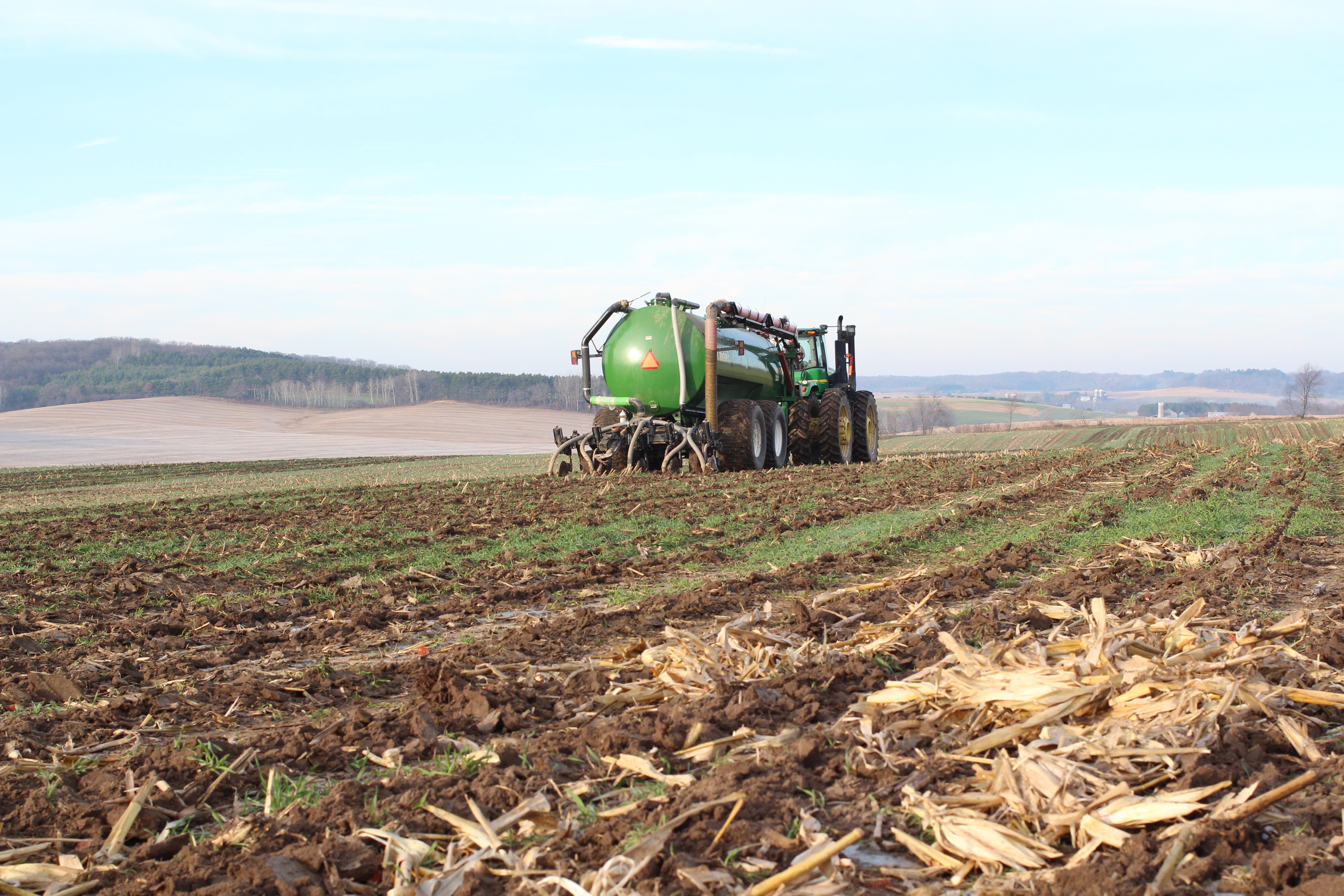Cool soil temps help keep nitrogen stable.
Has the soil hit 50 F? Under warm, wet soil conditions, ammonium nitrogen can convert to nitrate, which moves quickly with water, within two weeks of application. Once soil temperatures cool to 50 degrees F, it takes closer to six or more weeks for ammonium to convert to nitrate. To make the best use of manure nitrogen the following year, approach early fall applications with caution. Delay manure applications until soil temperatures are less than 50 degrees F. Each year is different, but in Wisconsin, mid-October is usually the time when soil temperatures get below 50 degrees. Still need to spread? Consider planting a cover crop that can take up any available nitrogen and hold onto it until it is useful the following spring. Get help with selecting and managing cover crops at www.fyi.uwex.edu/covercrop.
Spreading liquid manure adds water.
How saturated is the soil? A 7,000 gal/acre liquid manure application is equivalent to a quarter inch rain (see table). Before adding that additional water, determine if the soil can handle the extra saturation. If soils are already saturated, it can take as little as a quarter inch of rain to result in runoff. Thus, that manure application could make all the difference. Recognize the additive effect of liquid manure and watch the weather. Consider how much water a manure application will contribute to the soil and hold off if soils are saturated or heavy rains are in the forecast.
| Gallons of Manure per Acre | Inches of Water |
|---|---|
| 2,700 | 0.10 |
| 6,700 | 0.25 |
| 13,500 | 0.50 |
| 20,300 | 0.75 |
| 27,000 | 1.00 |
This article originally appeared in the latest UW Discovery Farms newsletter. If you would like to read more from the newsletter please click here.
- 2017 by the numbers - January 23, 2018
- Tile Drainage in Wisconsin publication updated - September 11, 2017
- Discovery Farms – Proactive progress for today and beyond - June 1, 2017
